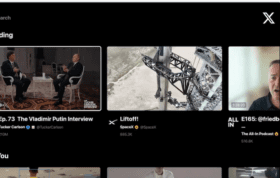 Dan Raffe, director of programmatic operations at Centro, which develops digital advertising and media management software to help advertisers streamline and scale digital campaigns, offers his take on a hot topic.
Dan Raffe, director of programmatic operations at Centro, which develops digital advertising and media management software to help advertisers streamline and scale digital campaigns, offers his take on a hot topic.
Pioneered in 2007, programmatic advertising is a quickly growing corner of the ad industry. Since 2013, programmatic has made up more than 50 percent of ad spending in the U.S., and forecasts indicate it will account for $27 billion worth of digital display buys in 2017.
But despite its mounting prominence, many still see this media-buying method as a buzzword. It’s understandable if you’ve taken a skeptical view of programmatic until now. After all, why direct funds to something that might be a passing trend?
But let me assure you, programmatic is ready to commit to the long haul. Although it started in desktop display, it’s now flourishing across other channels. By 2017, programmatic will account for an estimated 78 percent of all mobile dollars. We’ll also see a huge jump in digital video. While it currently accounts for 56 percent of programmatic spending, that number will reach 65 percent in 2017.
The numbers are pretty persuasive, and you may feel compelled to shift away from traditional media-buying methods. But how can you successfully implement programmatic campaigns if you don’t know where to start? The short answer: You can’t — at least, not effectively.
A Seat at the Marketing Table
Programmatic advertising refers to automated media-buying platforms. People often confuse programmatic with real-time bidding (RTB), but it’s important to make the distinction between the two. RTB is a media-buying method of purchasing an impression in an auction, and programmatic is the automated technology that makes this happens.
It might be a relatively young technology, but programmatic addresses today’s marketing issues head-on. Traditionally, there were three players in ad-buying: publishers, advertisers, and consumers. Advertisers would do research to pre-plan their campaigns, thinking, “What publishers and websites make sense for our ads?” From there, advertisers would approach publishers to issue insertion orders and determine placements.
This type of ad-targeting is 100 percent linear. You look at your inventory, determine what site would make the most sense for your audience, and buy a certain number of impressions.
Today, there are more aspects within that — and technology has inserted itself right in the middle. Programmatic is today’s evolution in automation, as it allows advertisers to access inventory automatically through demand-side (DSPs) and supply-side platforms (SSPs). Rather than buying impressions based on the site, DSPs enable advertisers to buy targeted impressions to effectively reach their desired audience — anywhere on the web, regardless of the media.
Imagine how much more impact your ads will have when they’re delivered within the right context to the right audience, rather than popping up randomly as users browse the internet. Programmatic enables you to target customers more effectively than ever before.
Become a Programmatic Power User
Used effectively, programmatic’s data-driven, automated approach can send your performance soaring. Here’s how to make that happen:
- Plan with purpose.
One of the biggest issues I see with clients is that they try to jump in to programmatic without a sense of where they’re going. Creating a programmatic plan without having clear objectives is like going grocery shopping without knowing what you’re going to make for dinner — you’ll wind up with a lot of material that may or may not amount to anything.
Ask yourself: What’s our brand trying to achieve with programmatic? Do we want to improve conversions among 30- to 35-year-olds? Reach more customers in remote areas? Define your goals, and build your programmatic strategy around them.
- Track your results.
Once you set your goals, drill down into your KPIs — the measurements that tell you whether your programmatic plan is working. After all, what’s the purpose of having a goal if there’s no way of knowing whether you’ve reached it?
Perhaps the goal is to increase foot traffic to your store. You can place an ad on your directions page and track engagement from that part of the site. Maybe you’re using mobile tactics to drive in-store traffic, so you keep an eye on how many consumers visit your location. Whatever your objectives, know which KPIs to monitor.
- Test and optimize.
There’s always room for improvement. Traditionally, campaign optimizations were done on a very scheduled basis. With programmatic, this is a continuous process. Advertisers are able to see — in real time — what’s working and what’s not working and optimize their campaigns based on those insights.
After gathering enough significant data to make actionable, educated decisions about your campaigns, you can identify where to optimize. You might want to make minor tweaks that can be addressed quickly, such as budget changes. Run multiple ways of finding an audience, identify which is performing best, and maximize your spending there. Or you may realize you need big-ticket changes like creative data segments and site placements. You’ll likely run into both scenarios.
Programmatic advertising might seem daunting, but it offers enormous benefits once you’ve mastered it — and it’s certainly not a passing trend. This new capability provides access to all of your ad channels in one platform and gives you more control over your advertising buys. Take steps to educate yourself on the practice, then execute with confidence.
The Cynsiders column is a platform for industry leaders to reach out to colleagues, followers, and the public at large. In their own words and in targeted Q&As, columnists address breaking news, issues of the day, and the larger changes going on in the ever-evolving world of television, video and digital. Cynsiders columns live on Cynopsis’ main page and are promoted across all daily newsletters. We welcome readers’ comments, queries, and column ideas at [email protected].





